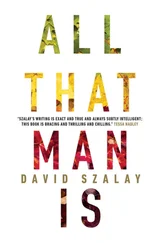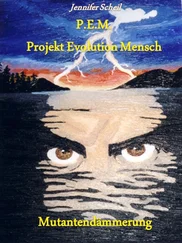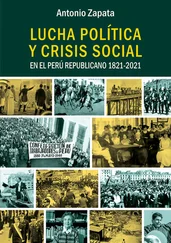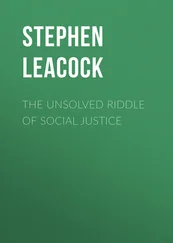Chapter 4, “Surviving Wartime Sexual Violence”, mostly builds on stories and interviews with male survivors of sexual violence collected in the Great Lakes region of Africa since 2009, and in Northern Ireland since 2005. It explores the various types of suffering induced by sexual violence, from physical to psychological and to social, and presents the ways in which male survivors try to deal with the consequences of sexual violence. The chapter also discusses the long-term impact of this type of violence on individuals as well as on the communities to which they belong. The chapter ends with a discussion on the broader consequences of this type of violence on post-conflict and reconciliation processes, and shows that the silencing of male survivors’ experiences is likely to impede the reconstruction of social links, and the stabilization of post-conflict societies.
Chapter 5, “The Elusiveness of Narratives on Wartime Sexual Violence Against Men”, explores understandings of, and narratives on, wartime sexual violence against men, as well as some of the questions they raise. The chapter argues that gender representations that are dominating at local, national but also international levels hinder the acknowledgement of the existence of male survivors of sexual violence, and thus obscure our understanding of the underlying mechanisms sustaining wartime sexual violence. The chapter explores what accounts for such a silencing at the local, national and international levels, from representations of sexual violence where men stand as perpetrators, to patriarchal cultures associating masculinity to strength, protection and invulnerability.
Chapter 6, “Conceptualizing and Implementing Care and Support Programs for Male Survivors”, reviews existing local and international programs and initiatives for the relief of male survivors, and highlights the important role played by organizations and groups led by survivors themselves. By putting the stress on the challenges faced by relief programs, the chapter also underscores the necessity for a contextualized and long-term prevention approach, as well as the importance of a combined study and strategy for alleviating the suffering of both male and female survivors of wartime sexual violence.
Chapter 7, “Prosecuting Wartime Sexual Violence Against Men”, explores the difficulties associated with the prosecution of wartime sexual violence against men. It looks at how major institutions like the International Criminal Tribunal for the former Yugoslavia, the International Criminal Tribunal for Rwanda as well as the International Criminal Court have attempted to tackle the issue. The chapter discusses the recent and promising changes in international law, but also highlights challenges related notably to impunity, underreporting, gender biases, as well as to the existence of a fragmented legal and institutional framework for the prosecution of wartime sexual violence against men.
Chapter 1
Conflict-Related Sexual Violence Against Men
An Overview
Sexual violence against women within armies, or used as a “weapon of war” in conflict zones such as in Syria, the DRC and numerous other conflict areas, has recently attracted a lot of media and academic attention. [1] Especially in the United States with the 2012 documentary film called The Invisible War about sexual assault in the US military, which has received several awards, and in France with the publication in February 2014 of the book La Guerre Invisible , which tackles the same issue of sexual violence within the French Army.
Overwhelming reports have been published since the end of the Cold War, revealing staggering numbers of women being raped in countries like the DRC, nicknamed the “rape capital of the world”, but also during the war in Bosnia-Herzegovina, in Liberia and in Sierra Leone, to quote just a few examples. Recent research has also highlighted the multiple forms that wartime sexual violence can take (so that it is not just about rape, but also about sexual slavery, sexual torture, sexual mutilations and so on), variations in who is targeted (e.g. women of a certain ethnic or religious group, all women, women and men of a certain ethnic or religious group, etc.), in who are the perpetrators and so on (for an overview, see Wood 2006). Several types of conflict-related sexual violence, like sexual torture, rape or mutilation, seem to be used in different ways and with more or less frequency in different settings, with, for instance, a predominance of sexual torture in detention during asymmetrical conflicts. In most cases, however, and in spite of accumulated empirical evidence and testimonies, it remains extremely complicated to understand why some conflict actors seem to be more prone to perpetrate sexual violence than others, or why patterns of sexual violence often seem to change over the course of a given conflict. In this perspective, the chapter provides a brief overview of theoretical frameworks developed over the past decades in order to explain the occurrence of conflict-related sexual violence. It shows how these various theoretical frameworks have so far failed to mainstream in the analysis the existence of sexual violence against men. It also presents the mounting empirical evidence regarding wartime sexual violence against men, and details some of its most remarkable patterns.
1.1. UNDERSTANDING WARTIME SEXUAL VIOLENCE
Multiple explanations have been put forward to try to make sense of the occurrence and patterns of wartime sexual violence, with the objective to come up with a theoretical framework that would provide an overall explanation for wartime sexual violence. Scholarly debates have mostly focused on the question of whether sexual violence can be understood as a strategy of combatants using it as a “weapon of war”, or whether it should be seen as the result of the combatants’ opportunistic choices. If understood as opportunistic, sexual violence does not result from a planned strategy, but rather accompanies other types of violence like pillaging and looting, and is facilitated by the weakening of social norms. Both explanatory strands have received partial empirical validation, but the “weapon of war” thesis has become particularly popular at the international policy level, especially since the UNSC Resolution 1820 (2008), adopted unanimously by the UN Security Council, described rape as a “tactic of war”. This thesis is, however, periodically challenged by the declarations of most concerned military and political authorities, who argue that sexual violence occurs without their consent. This suggests a potential lack of discipline within the ranks of armies and armed groups, as well as potential discrepancies between motives and interests of military leaders, and those of rank-and-file combatants (Leiby 2009, 448). Several authors have explored these dynamics and tried to solve this conundrum, like Wood (2006, 331), who proposes to explain conflict-related sexual violence by looking at the interplay between three levels of analysis, that of the relevant armed group, the smaller unit in which the combatants operate on a day-to-day basis, and the individual level, alongside the degree of access that combatants have to civilians. The idea that sexual violence is used as a war tactic, and in particular as an ethnic cleansing strategy, however, still dominates international policy debates, which frequently overlook the nuances offered by academics.
Research has also used gender-related analysis grids to provide a more detailed understanding of who is targeted by wartime sexual violence, and why. Many authors have thus put the stress on how gender roles, norms and relations come into play to enable and sometimes even increase the occurrence of sexual violence. Conflict-related sexual violence has, for instance, been analysed as a consequence of patriarchal gendered social norms (Brownmiller 1975), or of militarization of societies (Enloe 2000). Other authors like Miranda Alison (2007) stress the importance of heterosexual militarized masculinities and of particular constructions of gender, which intersect with ethnicity and other identity factors for explaining specific patterns of wartime sexual violence. In an attempt to map epistemological explanations of wartime sexual violence, Inger Skjelsbaek (2001a) has shown how, over the past decades, three main gender-based conceptualizations of wartime sexual violence have emerged, each based on different assumptions about human nature, gender and power relations: first, essentialism, according to which sexual violence, and especially sexual violence against women, is an inevitable part of war and a direct consequence of militarized masculinity (see, among others, Brownmiller 1975; Seifert 1993); second, structuralism, which points to structural factors as predisposing certain women to wartime sexual violence like marginalization, ethnicity, race or political affiliation, and which also sheds light on structural factors determining combatants’ behavior (e.g. Lentin 1997; Wood 2006); and third, social constructivism (e.g. Shepherd 2008; Sjoberg 2013), which explains that “war-time sexual violence can be regarded as a transaction of identities between the perpetrator and the victims” (Skjelsbaek 2001a, 226), a transaction that reinforces the masculinity of the perpetrator and simultaneously feminizes the victim.
Читать дальше












